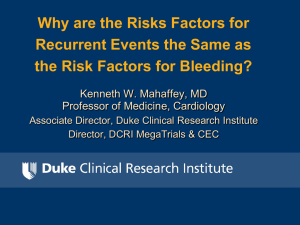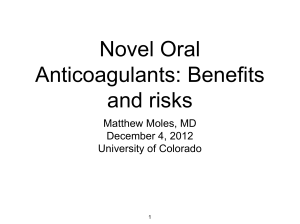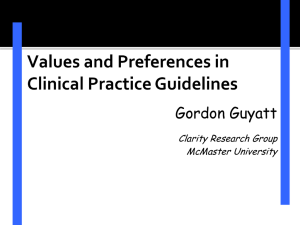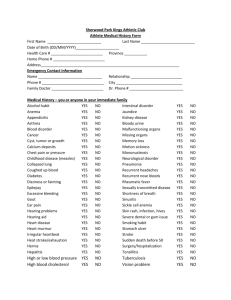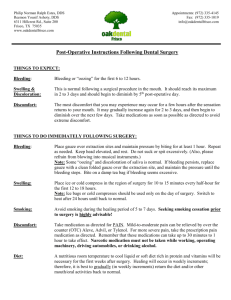Preferences for oral anticoagulants in atrial fibrillation: a best
advertisement
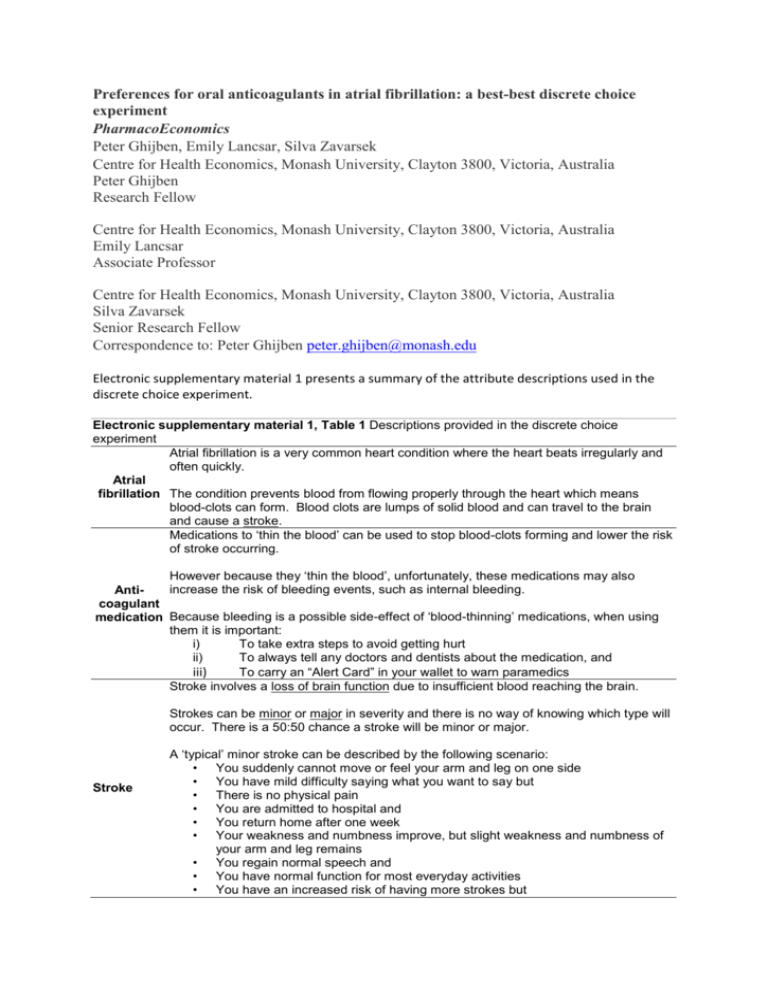
Preferences for oral anticoagulants in atrial fibrillation: a best-best discrete choice experiment PharmacoEconomics Peter Ghijben, Emily Lancsar, Silva Zavarsek Centre for Health Economics, Monash University, Clayton 3800, Victoria, Australia Peter Ghijben Research Fellow Centre for Health Economics, Monash University, Clayton 3800, Victoria, Australia Emily Lancsar Associate Professor Centre for Health Economics, Monash University, Clayton 3800, Victoria, Australia Silva Zavarsek Senior Research Fellow Correspondence to: Peter Ghijben peter.ghijben@monash.edu Electronic supplementary material 1 presents a summary of the attribute descriptions used in the discrete choice experiment. Electronic supplementary material 1, Table 1 Descriptions provided in the discrete choice experiment Atrial fibrillation is a very common heart condition where the heart beats irregularly and often quickly. Atrial fibrillation The condition prevents blood from flowing properly through the heart which means blood-clots can form. Blood clots are lumps of solid blood and can travel to the brain and cause a stroke. Medications to ‘thin the blood’ can be used to stop blood-clots forming and lower the risk of stroke occurring. However because they ‘thin the blood’, unfortunately, these medications may also increase the risk of bleeding events, such as internal bleeding. Anticoagulant medication Because bleeding is a possible side-effect of ‘blood-thinning’ medications, when using them it is important: i) To take extra steps to avoid getting hurt ii) To always tell any doctors and dentists about the medication, and iii) To carry an “Alert Card” in your wallet to warn paramedics Stroke involves a loss of brain function due to insufficient blood reaching the brain. Strokes can be minor or major in severity and there is no way of knowing which type will occur. There is a 50:50 chance a stroke will be minor or major. Stroke A ‘typical’ minor stroke can be described by the following scenario: • You suddenly cannot move or feel your arm and leg on one side • You have mild difficulty saying what you want to say but • There is no physical pain • You are admitted to hospital and • You return home after one week • Your weakness and numbness improve, but slight weakness and numbness of your arm and leg remains • You regain normal speech and • You have normal function for most everyday activities • You have an increased risk of having more strokes but • • The risk can be decreased with medications People rarely die from a minor stroke A ‘typical’ major stroke can be described by the following scenario: • You suddenly feel dizzy and you are unable to move or feel your arm and leg on one side of your body • You cannot swallow, your speech is slurred and it is difficult for others to understand you • You are unable to say what you want to say and you are unable to understand what is being said to you • There is no physical pain • You are admitted to hospital and stay for several weeks • About 1 in 5 people will die within weeks of their major stroke • After leaving hospital and for the rest of your life you require help to walk, you have difficulty thinking clearly, your speech remains slurred and difficult to understand, you have difficulty understanding what others are saying except for simple instructions, you are able to dress and feed yourself but you have poor bladder and bowel control • You may need to live in a nursing home and another stroke or illness such as pneumonia is likely to cause your death sometime over the next several years Overall, the chance of dying from a stroke is 12%. Bleeding can occur anywhere in the body, including the brain All bleeding is serious and requires treatment, but the severity can vary, with about half considered to be ‘life-threatening’. Bleeding event The most common type of bleeding occurs in the stomach and may typically be described by the following scenario: • You feel unwell for two days then suddenly vomit blood • You are admitted to hospital • A doctor puts a tube down your throat to see where you are bleeding and • You receive sedation to ease the discomfort of the test • No operation is needed but • You receive blood transfusions to replace the blood you lost • Your hospital stay is for 2 - 7 days and • You are tired for 3 weeks before you recover • You are prescribed more medication to be taken for the next 2 – 6 weeks to prevent further bleeding, and • You may have to discuss the need for a change in medication with your doctor • After that you are back to normal More serious bleeds however can have long-term effects on your health, including brain and organ damage. Antidote Blood test Overall, the chance of dying from bleeding is 8%. Some, but not all, ‘blood-thinning’ medications have antidotes to immediately reverse their blood-thinning effect, so if a severe bleeding event does occur, the antidote can be used to reduce the duration and severity of the bleeding event. Some, but not all, ‘blood-thinning’ medications need a blood test once a month (on average) to make sure they are working effectively and safely. Typically, the blood test involves attending a local medical clinic where a small sample of blood is drawn from your arm and sent to a laboratory for analysis. You must then call the clinic within 24 hours for the results and follow any instructions provided (such as a change in the dose of your blood-thinning medication). Dose Blood-thinning medication tablets are taken either once or twice a day and treatment is frequency often continued for life. Drug/food Some, but not all, ‘blood-thinners’ have the potential to interact with other medications, interactions food and even some illnesses. Interactions may stop medications from working properly and may even cause additional unwanted side-effects (such as bruising). Cost To limit potential interactions from happening, all doctors, dentists and pharmacists should be informed about the ‘blood-thinner’ before starting any new medications. Maintaining a well-balanced and consistent diet is also important. Depending on which ‘blood-thinning’ tablet is prescribed, the price you pay at the pharmacy each month may be different.


